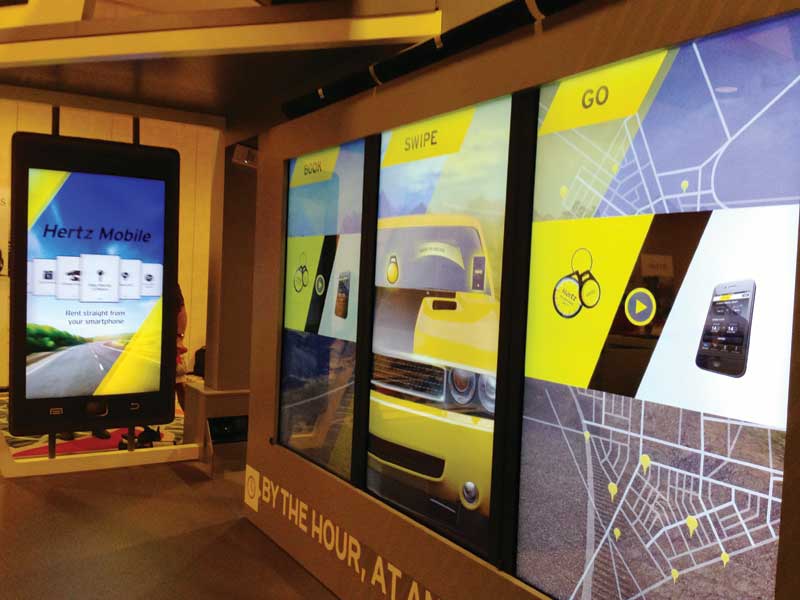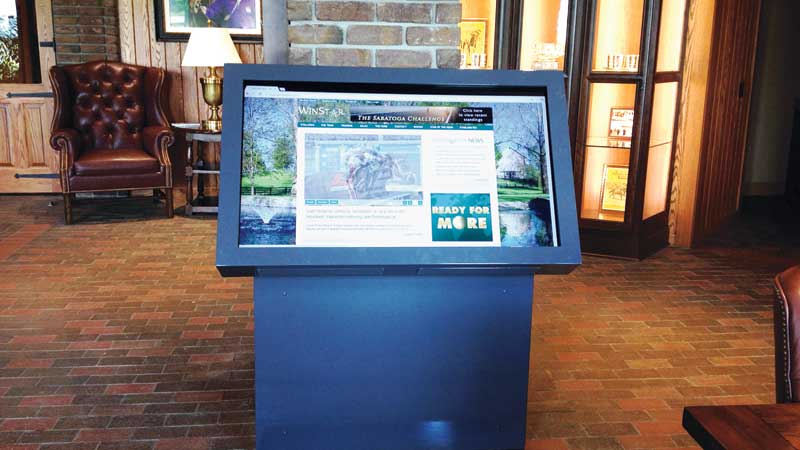
Video walls pose challenges for mounting hardware.
Mounting screens
Video walls pose challenges for mounting hardware. Not only are they heavy, but they are also often in closer reach for passersby, including unattended public areas where children attempt to climb them. Compared to the everyday go-to mounts for hanging digital signs, the installation will require a heftier system to support some 272 kg (600 lb) from a wall.
When a video wall will be part of a new construction, it is beneficial to design the surface and the mounting points accordingly to hold its full weight, particularly if the mounting hardware and components can be attained early in the process. For existing construction, where a structure may have trouble bearing the weight of the video wall, there are options for integrating support ‘legs’ into the installation, such that the floor is used to support the array’s weight vertically. Either way, proper engineering can provide a safe and sound configuration.
Serviceability is an often-overlooked factor in digital signage deployments. Fortunately, there are mounts specifically designed for video walls today that ‘pop out’ to enable servicing access across a multi-row screen array, particularly for central screens that would otherwise be difficult to get behind.
Another factor to consider is cable management. The wiring scheme should be organized so as to enable easy access to the key components. It is especially important for signal extensions—such as Category 5 (Cat5) High-Definition Multimedia Interface (HDMI) and Universal Serial Bus (USB) based extenders—to be placed in accessible locations, as they are often the root cause of a video wall failure.
Content and experience strategy
The content and experience strategy is really where a video wall project should begin. While expensive technology can certainly wow an audience, careful planning is key to differentiating between a digital ‘fish tank’ and an actual business driver that justifies the investment.

There are some similarities between touch-interactive kiosks and video walls.
It is important to define which actions passersby are anticipated to take when they see and touch the wall. It is also important to determine how to measure and report the success of the project for its stakeholders.
By way of example, the video wall may be intended for use by one person at a time or multiple people simultaneously. This is a matter not just of the number of touch points, but also of how personal or shared the experience is designed to be.
Given the amount of real estate available on a large-scale video wall, widgets may be developed to encourage playful interaction and to capture leads. These can then be experienced by passersby whether or not they need pinch-and-zoom gestures.
Another key consideration is content clutter. With some video wall deployments, every possible interaction is laid out either on the top ‘layer’ or just inside the initial loop. This can lead to information overload. The navigation experience should instead lead users subtly to the desired end point. The same tenets established for websites by the user experience (UX) design community apply just as effectively to interactive digital signage applications.
Thinking outside the box
Investing in 12 to 32 points of touch enables the integration of commonly understood gestures. As users zoom in, the layers of content can change before their eyes, offering new calls to action and pathways beyond the top layer, depending on which directions they swipe or pinch. The level of immersion to this experience is a vital element of the overall project.
Mobile devices’ operating systems (OSs) are now being combined with enterprise-level computing to support new public-facing software applications. As the public’s UX expectations are already being driven by their mobile devices, this convergence is a no-brainer, even if its implications for video walls are not yet fully understood.
The game is always changing, so it is a good idea to network with a variety of partners—including those steeped in interactive surface options and touch-based apps—to remain aware of and to apply best practices based on the technologies available at any given time.
Josh Tonasket is director of hardware solutions for Horizon Display, which develops touch-screen tables, video walls, kiosks and other interactive digital displays. He has designed video walls for companies like Google, Nike and General Electric (GE). For more information, visit www.horizondisplay.com.





